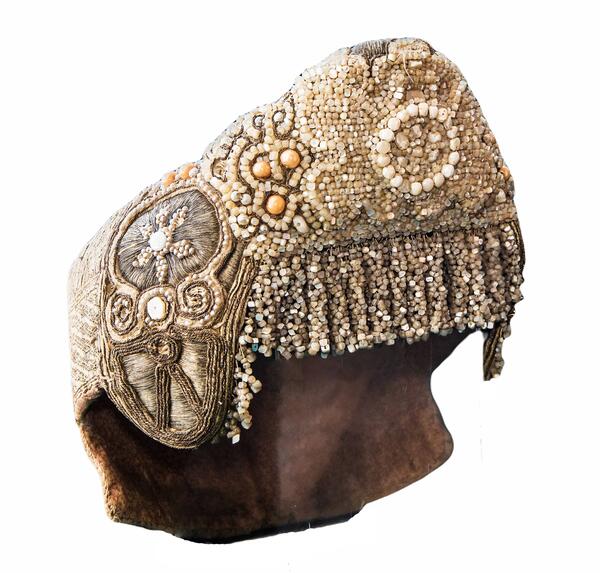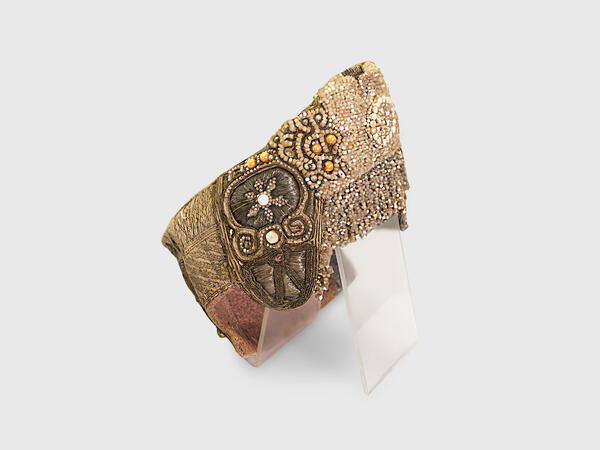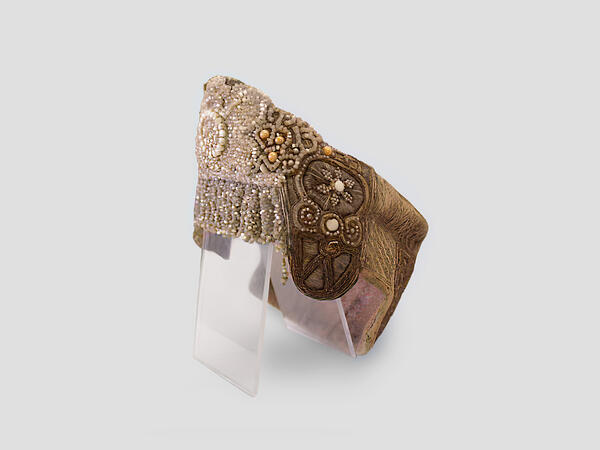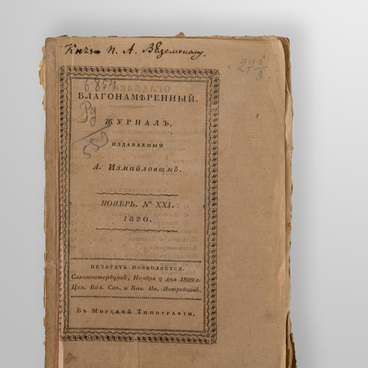According to the Russian tradition, before marriage, a woman was supposed to wear a high headdress open in the back, and after the wedding — a kokoshnik. It was usually worn until the birth of the first child and after that only on festive days.
A kokoshnik consists of a round cap with a band covering the forehead and a flat or convex bottom known as a volosnik. A crest is attached to the bottom — shaped like a triangle or a crescent moon. The forehead area is sometimes decorated with a fringe, and the temples are covered with small ear flaps.
The base of the crest was made of dense paper or glued canvas, covered with damask or velvet, and decorated with embroidery, brocade, gold or silver embroidery, or beads. More expensive headdresses were decorated with pearls and semi-precious stones. The back of the headdress was more modest, as it was often covered with a headscarf. These headdresses were made by skillful craftswomen. Ornate kokoshniks were expensive and were often passed down from generation to generation.
The earliest headdresses similar to kokoshniks were found by archaeologists in burials of the 10th –12th centuries in Novgorod. The student of folklore and art history Fyodor Buslayev commented that kokoshniks may have originated from Byzantine diadems and “came from the classical peoples… who in turn had borrowed a lot from the culture of the ancient peoples of the East.” The word “kokoshnik” has been mentioned in literary sources since the 17th century.
In pre-Petrine Russia, kokoshniks were worn by all women, regardless of their social status; after the reforms of Peter the Great — only by representatives of the peasant, bourgeoisie, and merchant classes. In the 19th century, the Russian national headdress came back in style; Emperor Nicholas I even approved the kokoshnik as an element of ladies’ dress clothes.
Ivan Lazhechnikov mentioned this innovation in his historical novel “The House of Ice” and provided an ironical description of “a human face, painted with whitewash and rouge, with arched eyebrows under a huge [richly embroidered] kokoshnik shaped like a shovel”.
The shape and décor of kokoshniks varied across Russia’s governorates. The displayed headdress is decorated with “frosty” embroidered patterns and pearls, typical of the north-western regions.
This kokoshnik entered the museum in 1985.





